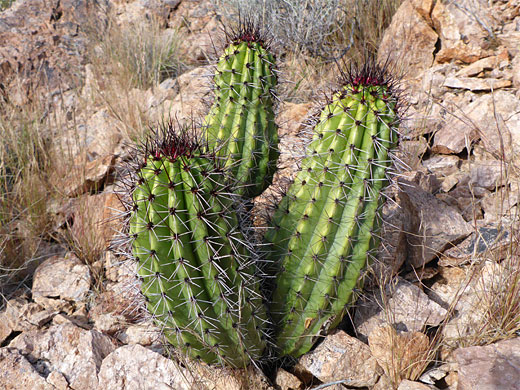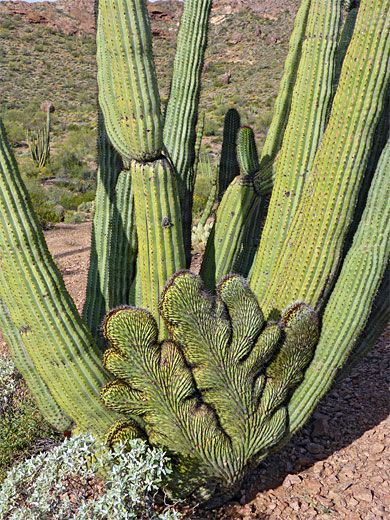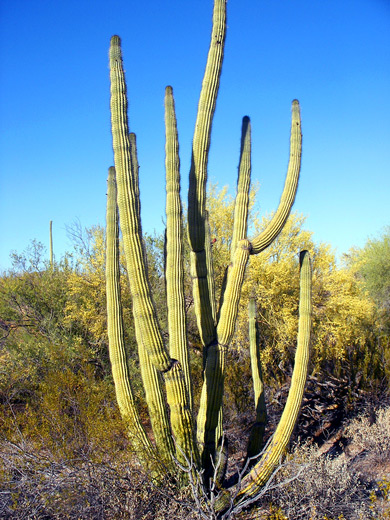Scientific name:
Stenocereus thurberi
Common name:
Organ pipe cactus
Range:
South Arizona, between Ajo and Marana
Form:
Clusters of tall stems, branching from the base
Habitat:
Scrubland, south-facing rocky slopes
Flowers:
Light pink with white centers, or all-white, appearing close to the top of each stem and blooming at night

Distribution map for stenocereus thurberi
Along with the saguaro, the organ pipe (stenocereus thurberi) is one of Arizona's most distinctive cacti, forming large clusters of 30 foot high stems, branching from the base - it is this characteristic which distinguishes the two species, as branches on saguaro only appear some way up the stem. But unlike the widespread saguaro, organ pipes have limited distribution, in the central portion of far south Arizona, and is seen most visibly in Organ Pipe Cactus National Monument, bordering Mexico. This restricted, southerly location is a result of low frost tolerance, as the cactus is only able to withstand short cold spells of temperatures no lower than -4°C (25°F). The most northerly known specimen is found in Ironwood Forest National Monument northwest of Tucson.
The bright or dark green stems, 6 inches thick, have between 15 and 20 ribs, bearing brownish grey spines up to 2 inches long. Occasionally the growing tip becomes damaged by frost or other factors, which might cause branching, or at least growth of a new, distinct segment of the stem, but most spreading occurs from the base. A large clump may be 200 years old and contain many dozens of stems. The white or pinkish flowers are borne by a tube up to 4 inches long, while the spiny, spherical, greenish-red fruits are also large, sometimes 3.5 inches across.
The bright or dark green stems, 6 inches thick, have between 15 and 20 ribs, bearing brownish grey spines up to 2 inches long. Occasionally the growing tip becomes damaged by frost or other factors, which might cause branching, or at least growth of a new, distinct segment of the stem, but most spreading occurs from the base. A large clump may be 200 years old and contain many dozens of stems. The white or pinkish flowers are borne by a tube up to 4 inches long, while the spiny, spherical, greenish-red fruits are also large, sometimes 3.5 inches across.
All Contents © Copyright The American Southwest | Comments and Questions | Contribute | Affiliate Marketing Disclosure | Site Map











